Beautiful Plants For Your Interior

What is the Maximum Size Shed Permitted Without Planning Permission
When you have decided that you want to erect a small garden shed at home, your thoughts turn to, do I need planning permission for a shed? What is the maximum size shed permitted without planning permission?
Do not worry you are not alone. Let us hopefully put your mind to rest at this point and say no, planning permission is generally not required for any domestic garden shed.
If you want to put up an outbuilding such as a garden shed or summerhouse in your garden, building regulations will not normally apply if the floor area of the building is less than 15 square metres and contains NO sleeping accommodation.
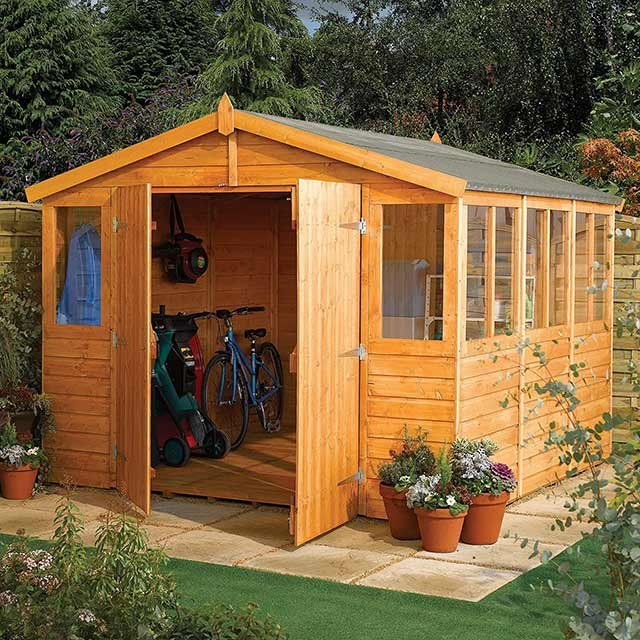
When Does a Shed Need Planning Permission?
It’s Not All Bad News
However, if the floor area of the building is between 15 square metres and 30 square metres, you will not normally be required to apply for building regulations approval, providing that the building contains NO sleeping accommodation and is either at least one metre from any boundary or it is constructed substantially of non-combustible materials.
That said, it will always be down to the individual to check with their own local planning authority first. If you have a general idea of the size of your garden shed and its location it would be wise to check and discuss your proposal with them, even before you buy your shed, as there could well be other considerations before you start work.
Please Note! If you don’t abide by the rules and regulations you could find yourself being forced to remove your shed or outbuilding and end up having to put things back to how they were, so please be sure you are within the guidelines before moving forward.
Contacting your local planning authority in England and Wales couldn’t be easier, simply go to the government’s planning portal Find your LPA. Then to find your local planning department and their direct contact details, simply enter your postcode in the field provided and follow the simple instructions.
Different Rules
For those living in Wales, Scotland, and Northern Ireland different rules apply. You should seek clarification and approvals with your own local authorities which can be found by following the appropriate links below.
For those living in Scotland, your enquires should go through the Scottish planning portal
For those living in Northern Ireland, your enquiries should go through the Northern Ireland planning portal
For those living in Wales, a further ‘technical guide’ can be downloaded from the Welsh government’s website. This document provides additional complementary information over and above that which is written here and which may affect your ‘planning permissions’. We advise that you discuss any queries you have with your own local authority.
When Does a Shed Need Planning Permission?

Comply With The ‘Permitted Development’ Rule? If Not You Will Need to Make a ‘Planning Application’ to Your Local Authority
As a guide and for those looking for a quick outline of the requirements, we will explore a little deeper as to when you would need planning permission for a garden shed.
Having said that a domestic garden shed does not generally need planning permission, there are however certain laws and planning legislation that are in place throughout the UK when it comes to the construction of any building and to which we must all adhere.
Under the current regulations and since 2008, planning requirements for outbuildings are covered under the ‘Permitted Development’ rule. These outbuildings include greenhouses, garden sheds, bike sheds and garages.
Outbuildings that comply with the ‘limits and conditions’ set out for ‘permitted development’ are granted an automatic planning application approval. If you read this section you should be able to answer the question ‘How big can I build a shed without planning permission’.
There is however a caveat to this, in that ALL the “limits and conditions” (if applicable) surrounding this automatic approval must be met to be able to construct under the ‘Permitted Development’ rule.
Legislation in England & Wales currently states that a shed may require ‘planning permission’ if ALL the applicable ‘limits and conditions’ are not met, and or are under Article 4 direction.
Let’s look at these terms individually, and what is meant by the terms: limits and conditions, permitted development and Article 4 direction.
Generally, as we stated at the beginning of this post you will more than likely not require planning permission for your garden shed, providing it’s not above 2.5 m (8ft 2in) tall to the eaves, located at the rear of the house and away from the properties boundaries. In addition, you should ensure you use it for nothing more than storage.
However, the technical answer is as stated in the latter part of the post. The consideration is that 50% of the garden or land around the house is to be calculated, this should include the footprints of any extensions and or other outbuildings when making your calculations.
For example: If your calculations show that your garden/land is 50m2 – (60 sq yards) (after including the ‘footprints’ of any existing extensions and our outbuildings over and above that of the dwelling) then 50% of 50m2 or (60 sq yards) is 25m2 or (30 sq yards).
Therefore, your shed or outbuilding should not exceed approximately 5m x 5m = 25m2 or ( with a height to the eaves no more than 2.5 m (this is providing all other conditions are met as laid out under the terms of the Permitted Development rule above.
Limits and Conditions
The construction of an outbuilding, in this case, a garden shed in our example, needs to meet ALL the following limits and conditions set out under current government legislation to receive a Permitted Development Approval status. The responsibility for compliance is that of the homeowner/applicant.
Failing to meet just one of these limits and or conditions will no doubt result in the necessity of a ‘formal’ planning application to be submitted for approval to the local authority.
Limits and Conditions to be Met Before Permitted Development Status Can be Given For an Outbuilding
1. Your new garden shed, and or other outbuildings should not cover more than 50% of the total of the garden/land around the house. Note: that all other outbuildings and or extensions to the original house must be included when calculating this 50%. (Click Image to Enlarge)
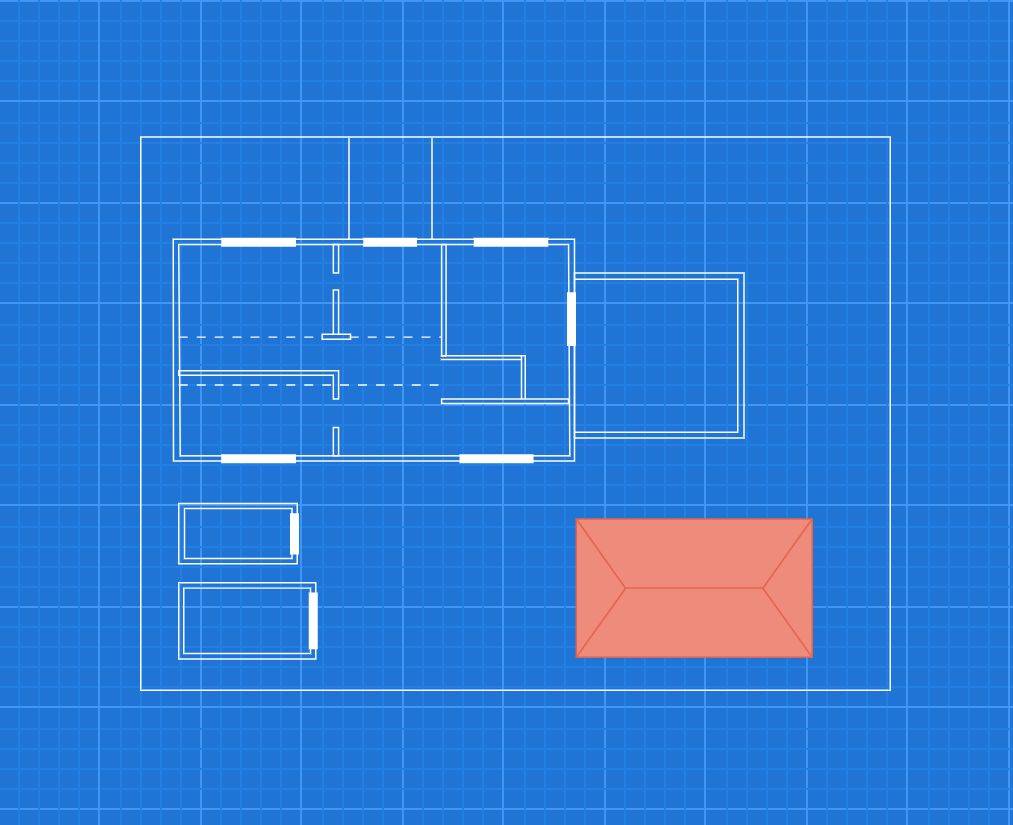
2. There shall be no (outbuildings) under the ‘permitted development’ rule allowed on the grounds of any ‘listed’ building. Our advice would be to consult with your local authority. It’s likely you will need ‘Listed Buildings Consent’ and possibly be required to submit a planning application instead if Listed Building Consent has not been given. (Click Image to Enlarge)
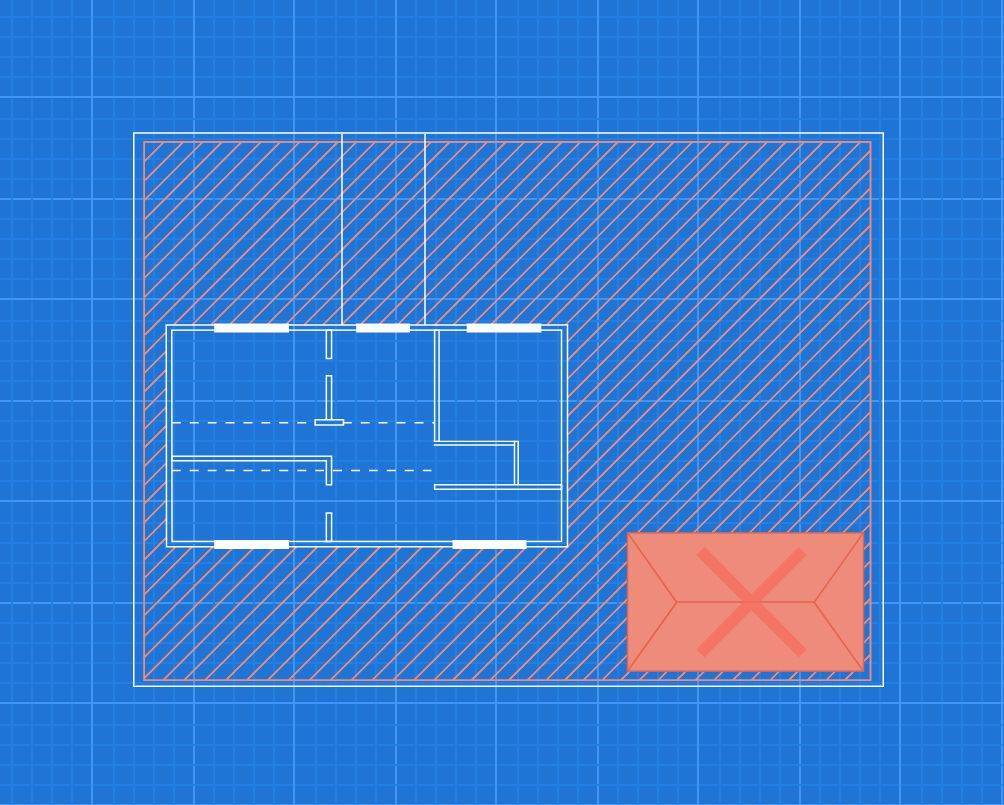
3. On designated lands: Outbuildings to the side of the house are not considered permitted developments. Designated lands are National Parks, The Broads, or any areas of outstanding natural beauty, all conservation sites and world heritage sites. (Click Image to Enlarge)
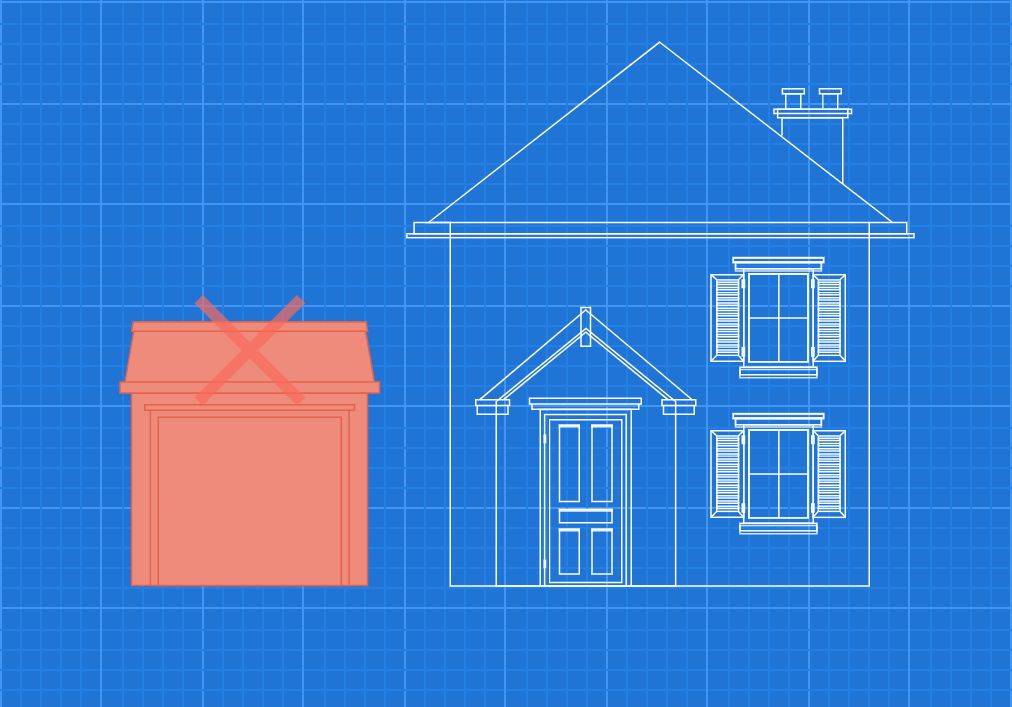
4. On designated lands: The total area to be covered by any outbuilding more than 20 meters (65ft 5in) from any wall of the house must not exceed 10 square meters (107.6 sq ft) to be considered a Permitted Development. (Click Image to Enlarge)
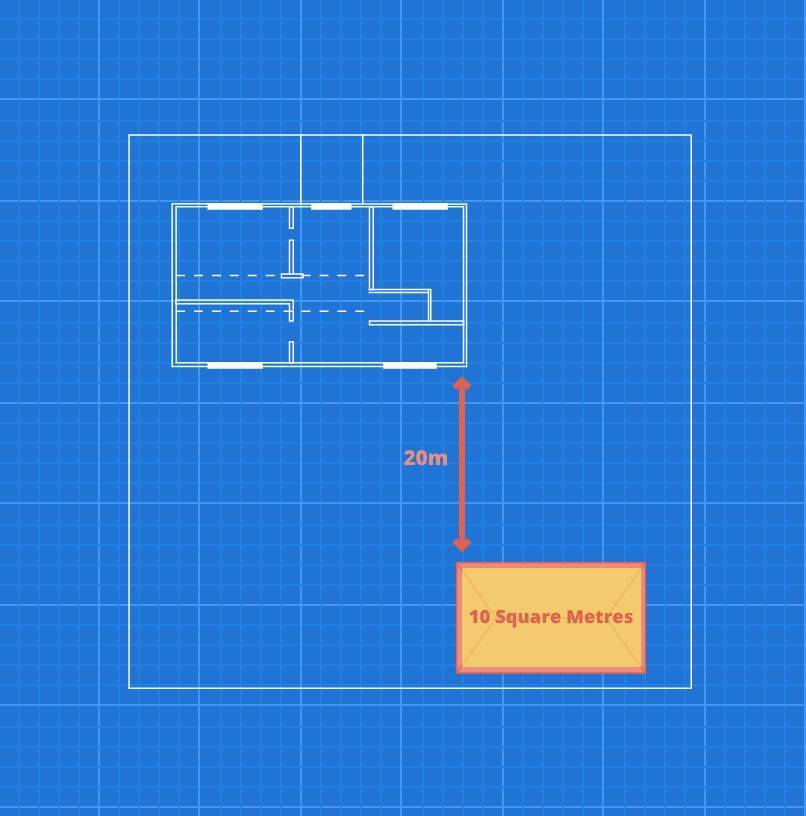
5. An outbuilding ie. (Garden Shed) is not considered a permitted development that is forward of the principal elevation of the original house. In other words, in front of your house. There may be strict exceptions, so if this becomes an issue check with your local planning authority. (Click Image to Enlarge)
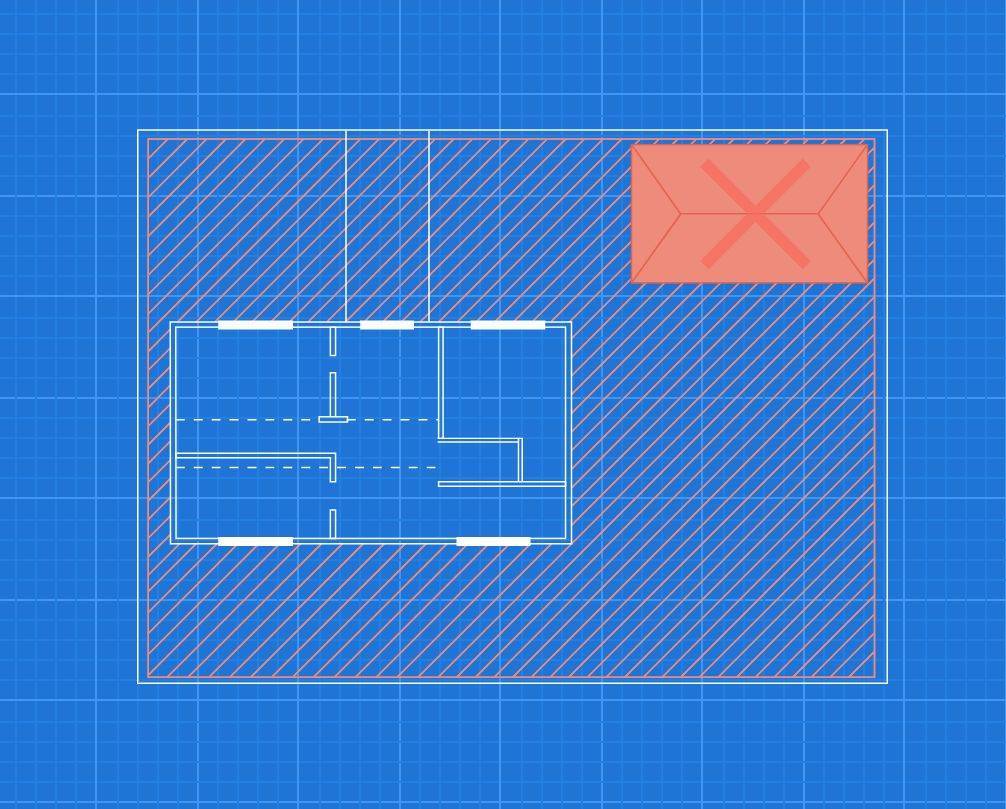
6. To be considered as a ‘permitted development’, any new outbuilding (see ‘permitted development’) should not be self-contained accommodation, separate living quarters or a microwave antenna. (Click Image to Enlarge)

7. The outbuilding must be single-storey and have maximum eaves heights. Eave height should not exceed 2.5 meters (8ft 2in) with a maximum overall height of 4m (13ft 1in) with a dual-pitched roof or 3m (9ft 8in) in any other case. (Click Image to Enlarge)
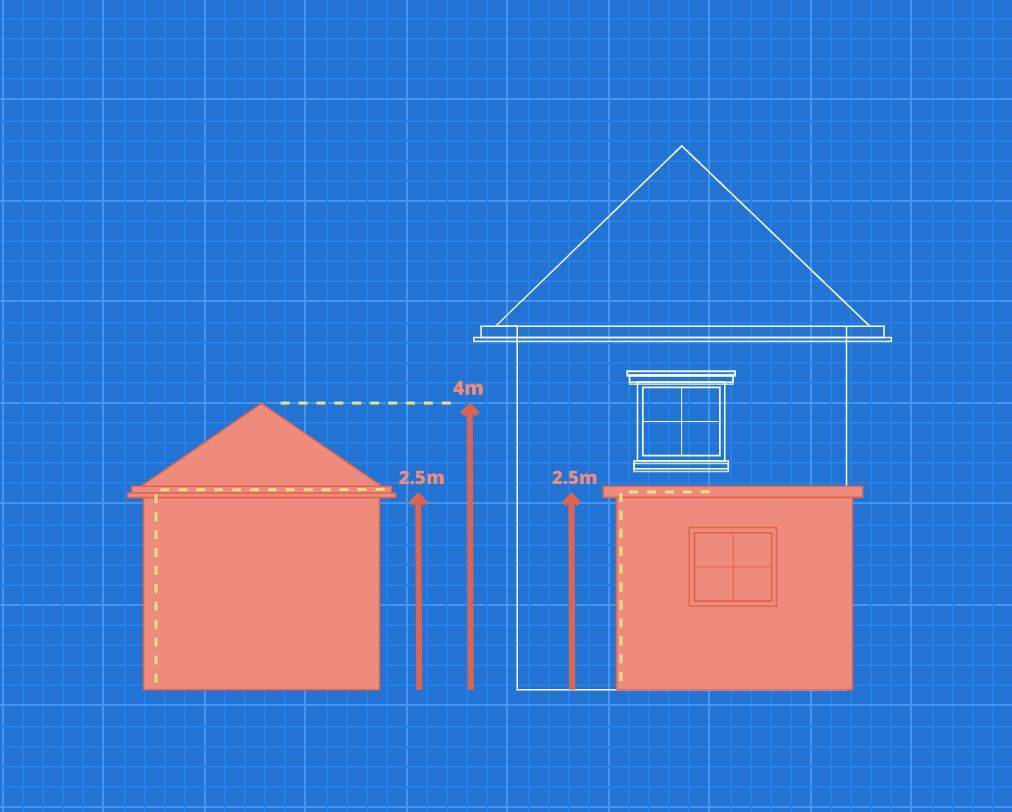
8. If the proposed outbuilding is within 2m (6ft 6in) of the property boundary then the whole outbuilding must not exceed 2.5m (8ft 2in) in height. (Click Image to Enlarge)

9. Any balconies and or verandas are not considered as ‘permitted development’. However, raised platforms, like decking are allowed providing they do not exceed 300mm (1ft). (Click Image to Enlarge)

10. Not applicable in our garden shed example but: Containers such as LPG Gas and or Oil used for domestic heating purposes shall not exceed 3,500 L (660 gall) capacity. (Click Image to Enlarge)
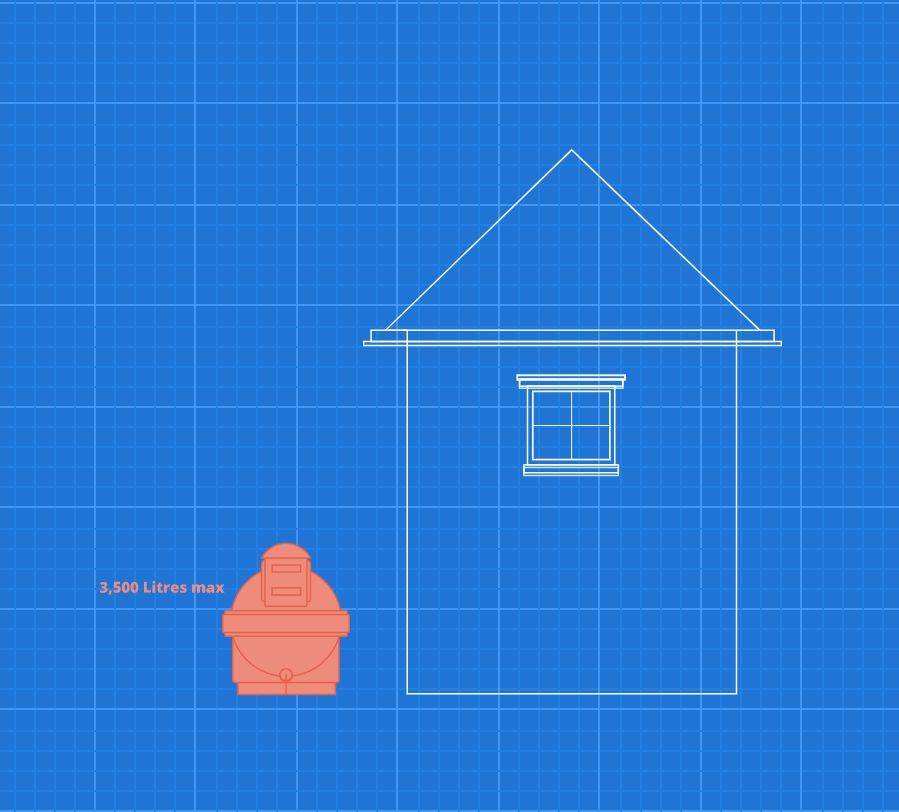
Class (E) Structures
It is always worth double-checking the design of your shed and that it meets the criteria for ‘permitted development’ using the section about Class E structures in the downloadable government’s handy guide.
Intended Use
If you are intending to use your shed/outbuilding for anything other than storing garden materials, bicycles, pool equipment etc. For example, an office or similar it is likely you will need a ‘planning application’.
If in any doubt contact your local planning authority for clarification (follow the link) as detailed in ‘Find your LPA’ we mentioned at the beginning of this post.
Permitted Development
The term ‘Permitted Development’ means the outbuilding should complement the/your existing dwelling. The ‘term’ used by the planning authority is “Purpose incidental to the enjoyment of the dwelling house”.
In other words, the building or construction being built under the ‘permitted development’ rule should not be self-contained accommodation, a kitchen, bathroom, or bedroom, you get the picture, right? These types of ‘outbuildings’ will require a planning application. This can be applied for through your local authority.
At this point, it should also be noted that the ‘permitted development’ rule only applies to houses. If you live in a flat, maisonette or another type of dwelling you should seek further clarification from your local authority for any ‘approvals’ concerning constructing under the ‘Permitted Development’ rule.
You should also check with your local planning authority whether ‘permitted development’ rights apply, as they may have been removed by what are known as ‘Article 4 directions’.
Article 4 Directions
Article 4 direction is made by the local planning authority. It can and often does restrict the scope of ‘permitted development’ rights either in relation to an area or site, or a development anywhere in the authority’s area.
Where an Article 4 direction is in effect, a planning application may be required for the development/construction or erection of an outbuilding that would otherwise have been granted under the ‘permitted development’ rule.
Luckily the public is able to get planning advice and interactive guides concerning the ‘need for planning permission’ at the government’s planning portal, it is a good source of information and guidance..
FAQ’s
What Materials Can I Use to Build a Shed Without Planning Permission?
There are no restrictions on the materials you can use to build a shed without planning permission, as long as the shed meets the size and location criteria. However, it is recommended to use materials that are durable and weather-resistant, such as timber, metal, or plastic.
Can I Use my Shed as a Living Space Without Planning Permission?
No, you cannot use your shed as a living space without planning permission. Sheds are considered to be outbuildings and are only intended for storage purposes. If you want to use your shed as a living space, you will need to apply for planning permission and ensure that the shed meets building regulations.
Do I Need to Inform my Neighbours if I am Building a Shed Without Planning Permission?
You do not need to inform your neighbours if you are building a shed without planning permission, as long as the shed meets the size and location criteria. However, it is recommended to discuss your plans with your neighbours beforehand to avoid any potential disputes. If your neighbours have concerns about the shed, they may be able to challenge it through the planning process.
Conclusion
Generally, as we stated at the beginning of this post, you will more than likely not require planning permission for your garden shed, providing it’s not above 2.5 m (8ft 2in) tall to the eaves, located at the rear of the house and away from the properties boundaries.
In addition, you should ensure you use it for nothing more than general garden storage. However, technically the correct answer is as stated in the latter part of the post under ‘Limits and Conditions’.

What is the Maximum Size Shed Permitted Without Planning Permission: Easily Calculate The Garden Size Around Your House
The legislation states that 50% of the total garden or land around the house is to be calculated and used as a basis to calculate your shed footprint. You should also include the ‘footprints’ of any extensions and or other outbuildings when making your base calculations.
Working Example: If your base calculations show that your garden/land around your house is 50m2 or (60 Sq Yards) after including the ‘footprints’ of any existing extensions and our outbuildings over and above that of the dwelling, then 50% of 50m2 or (60 Sq Yards) is 25m2 or (30 Sq Yards).
Therefore, your shed or outbuildings maximum footprint should not exceed approximately 5m x 5m or 25m2 – (16ft x 16ft or 30 sq yards) with a height to the eaves no more than 2.5 m or (8ft 2in)
This is providing of course that all other applicable conditions are met as laid out under the terms of the Permitted Development rule explained in this post.
Disclaimer
Users should please note that this is an introductory guide and is not a definitive source of legal information. This page does not constitute legal advice, and all planning permission decisions are dependent on local authorities.
